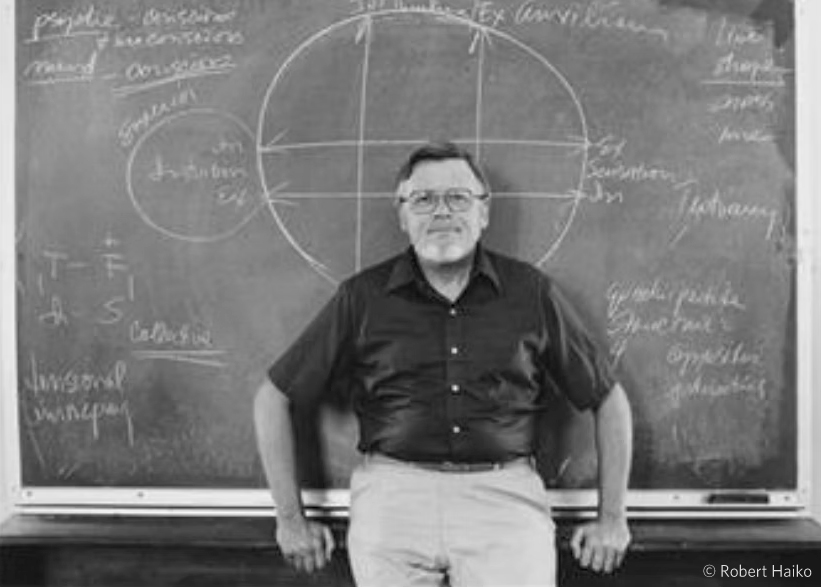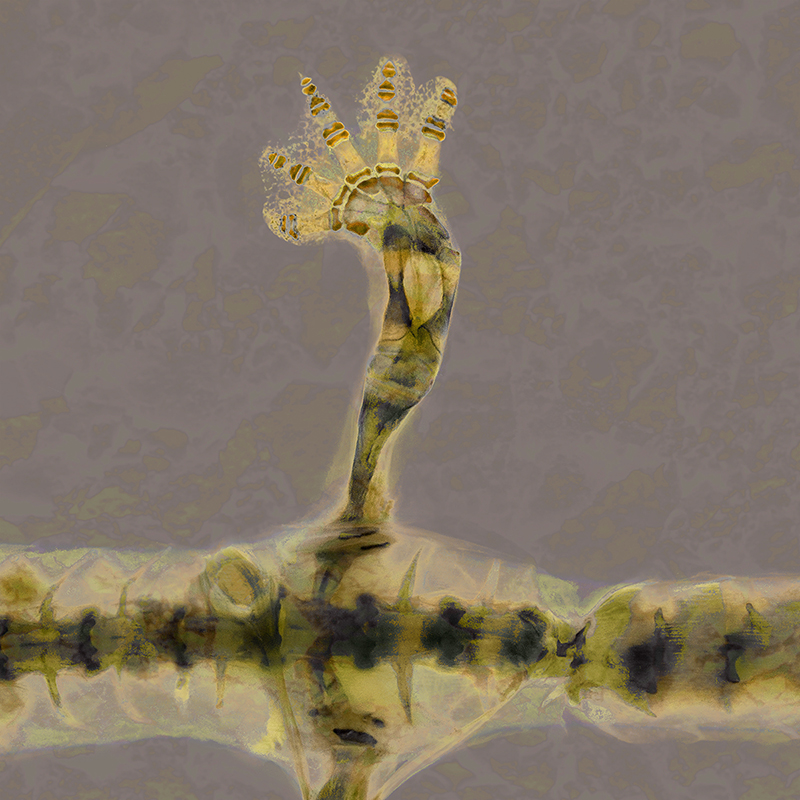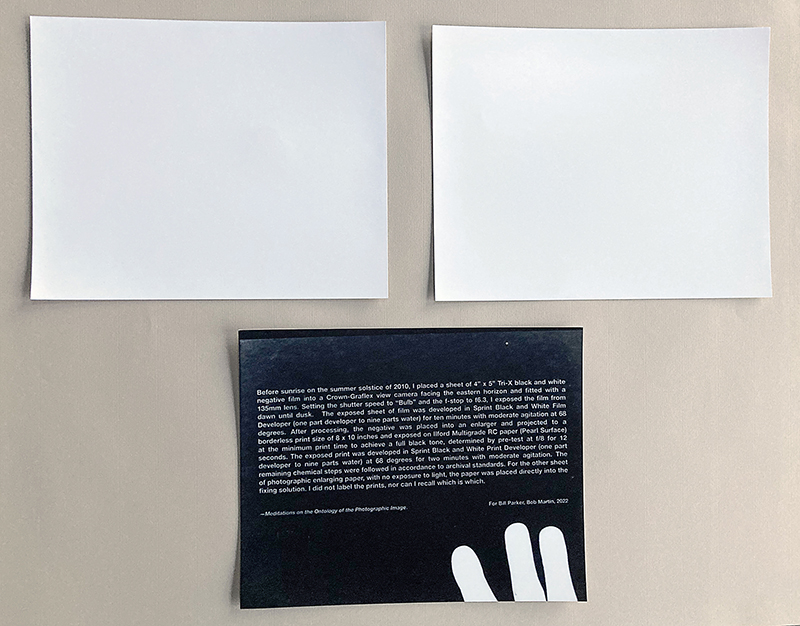The exhibition is now available online here, complete with artist statements, and reflections
Bill Parker: A Matter of Influence
Collected Works by Students, Friends & Colleagues of William E. Parker
This exhibition brings together a selection of artwork created by artists influenced by the teaching of William E. (Bill) Parker (1932-2009), as curated by Bob Martin. The Rhode Island Center for Photographic Arts is pleased to be able to present this exhibition to honor and reflect on Bill Parker’s influence on photography and the careers of the assembled exhibitors. Looking for a way to underscore Bill’s efforts, and the lasting effect he’s had on the included artists, this exhibition is not organized by artist, but presented to highlight some of the major themes in Parker’s teaching. Each invited artist had their subsequent careers, influenced to some large degree by their association with Bill, either as student, friend or colleague.
In addition to concepts and work by William E. Parker, the exhibition includes a small collection of work by: Renee Allie, Mauro Altamura, Stephan Apicella-Hitchcock, John Back, Reenie Barrow, Stephan Brigidi, Hilary French, Wendy Gogel, Peg Harrigan, Ted Hendrickson, Bob Kelley, Mary Kocol, Dean Kotula, Bob Martin, Stephen Petegorsky, David Seigel, Jim Stone, Brian Swift & John Willis. I know there are many others, not included here, who Bill influenced during his long career, and we encourage you to share your comments and reflections here, or on social media @RIPhotoArts.
– David DeMelim,
Managing Director,
RI Center for Photographic Arts
A small selection of work to be included
Bill Parker: William E. Parker (1937 -2009)
Educator, Mentor, Friend

About: William E. Parker
Bill Parker was an outstanding visual arts educator, having served such institutions as Pratt Institute; Parsons School of Design (both as dean and vice president); the School of Fine Arts at the University of Connecticut (1969-94); and the Rhode Island School of Design, where for two decades, he was a visiting artist in graduate photography.
A graduate of the University of Florida, Bill received its Distinguished Alumnus Award in 2000 in recognition of a rich career in art education. Bill’s writings on 19th and 20th century photography appeared in numerous periodicals, and he edited many lauded books on the history of photography. He was a lifetime member of the National Society for Photographic Education, having served as chairperson, and a member of the Board of Trustees of the Visual Studies Workshop, SUNY Rochester. For 30 years, Parker was an active member of the New York C.G. Jung Foundation for Analytical Psychology and the analytical psychology organizations of New York and Boston. A renowned lecturer, he remains a recognized pioneer in the interpretive analysis of photographic and intermedia imagery from Jungian perspectives.
Parker’s personal art combined painting and photography and were represented in numerous national and international group exhibitions and one-person shows. He received two individual artist grants from the National Endowment for the Arts, and in addition to private holdings, his work is represented in such collections as the Harn Museum at the University of Florida, RISD Museum of Art, Princeton Art Museum, the International Museum of Photography at George Eastman House, DeCordova Museum, the J. Paul Getty Museum, San Diego Museum of Photographic Arts, Los Angeles County Museum of Art, and the Philadelphia Museum of Art.
As a teacher, Parker mentored artists-in-the-making for more than four decades. Recognized for his dedicated activity as a photographic educator, Parker received the first American Photo Teacher of the Year award in 1990.
Exhibition Statement:
In a search for our show’s title, Brian Swift suggested a favorite trope and oft-repeated phrase from Bill Parker’s teachings, Amor Mundi, “love of the world,” which has its roots in the philosophy of Hannah Arendt and implies an obligation for people to engage with the world. This theme ran throughout Bill’s lectures: From the Renaissance forward, subjectivity increased to the point where Western culture found itself, via Descartes, doubting the existence of anything outside of the knowing self. Viewed in this context, photography was born as a way of confirming the presence of the world without subjective intervention. It is the first medium in which the physics of light and the chemistry of earthly elements combine to create an image. In his lectures titled, Ontological Aspects of the Still Photograph, Bill emphatically asked his students to consider the implications of choosing an artistic medium in which light is the author of the image, and to humbly acknowledge that our efforts with photographic media rely heavily on chemical and physical processes that lie beyond human enterprise. He did not think of photography as simply a technology that came into being in the 1820s or 30s, but an aspect of human consciousness in evidence as early as the caves at Lascaux, a history that he traced through his lectures on the Mimetic Tradition in Art.
Bill Parker was also a follower of the psychology of Carl Jung. He applied the theory of archetypes to the creation and interpretation of images: his introductory lectures were a methodical and thorough explication of the differences between sign, symbol, and archetype. He applied Jung’s theory of psychological types to photographic practice, offering photographers an opportunity to expand the expressive potential of their work. Part of this exhibit is organized around this unique approach.
Bill Parker taught artists-in-the-making to “cast their nets wide” in their search for meaning in art and life. The matter of his influence, as expressed in this group exhibit, is as broad as the range of his teachings.
– Bob Martin
Read Complete Exhibition Statement
About: Bob Martin
Bob is an active member of the Rhode Island Center for Photographic Arts, and currently teaches at the Wheeler School in Providence. He organized and curated this exhibition to honor Bill Parker’s influence on those around him and to revisit his approach to photography. Additionally Martin has created a website as an archive of Bill’s teaching, published essays, and artwork.
Simply put, Bill Parker was, is, and will continue to be the greatest artistic influence in my life. His friendship and guidance extended beyond the scope of art. He cared deeply for his students, treating us with great respect and admiration, welcoming us into this quirky little group of artists who relied so heavily on the automatic impression of light in creating an image. His teaching style was legendary: dressed more for a wedding reception than a classroom, his Floridian accent boomed off the lecture hall walls, delivering a wide array of ideas drawn from the history of art, photography, literature, philosophy, and science, the nature of consciousness, the principles of Jungian psychology, and a trove of personal stories: all aimed at bringing students to a greater awareness of what it means to embrace a life in the arts. His intuitive mind resisted the order required to load an eighty-slide carousel, instead pulling images out of his famous metal cases one at a time, not quite knowing where the associative train might lead. His teaching style paid high tribute to authors and scholars past and present. And while he could recite from memory an array of quotable quotes from the likes of Locke, Bazin, Cavell, Berger, DeDuve, and Sontag (to name but a few), he would often haul a large suitcase full of books and periodicals that he would cite and share during lectures.
– Bob Martin January, 2025
Bill Parker: A Matter of Influence
Collected Works by Students, Friends & Colleagues of William E. Parker
The exhibition is now available online here, complete with artist statements, and reflections
Opening Reception: June 19th 5:00 – 8:00pm
On View: Thursday, June 19th – July 11th
The Rhode Island Center for Photographic Arts, 118 N. Main St. Providence, RI
Located in the heart of Providence, RICPA was founded to inspire creative development and provide opportunities to engage with the community through exhibitions, education, publication, and mutual support.
RICPA exists to create a diverse and supportive community for individuals interested in learning or working in the Photographic Arts. We strive to provide an environment conducive to the free exchange of ideas in an open and cooperative space. Members should share a passion for creating, appreciating, or learning about all forms of photo-based media. We work to provide a platform for artistic expression, that fosters dialogue and drives innovation in the photographic arts.
The Gallery at the Rhode Island Center for Photographic Arts is a member of Gallery Night Providence https://www.gallerynight.org/
Want to become a RICPA Member? Membership brings many benefits and discounts, for more information and to find the membership level that fits you, visit our website at https://www.riphotocenter.org/membership-info/ You may become a member at entry, member benefits begin immediately and run 365 days from your start date.
Questions: Contact gallery@riphotocenter.org To learn about other RICPA exhibits and programs, visit https://www.riphotocenter.org/.


















Leave a Reply